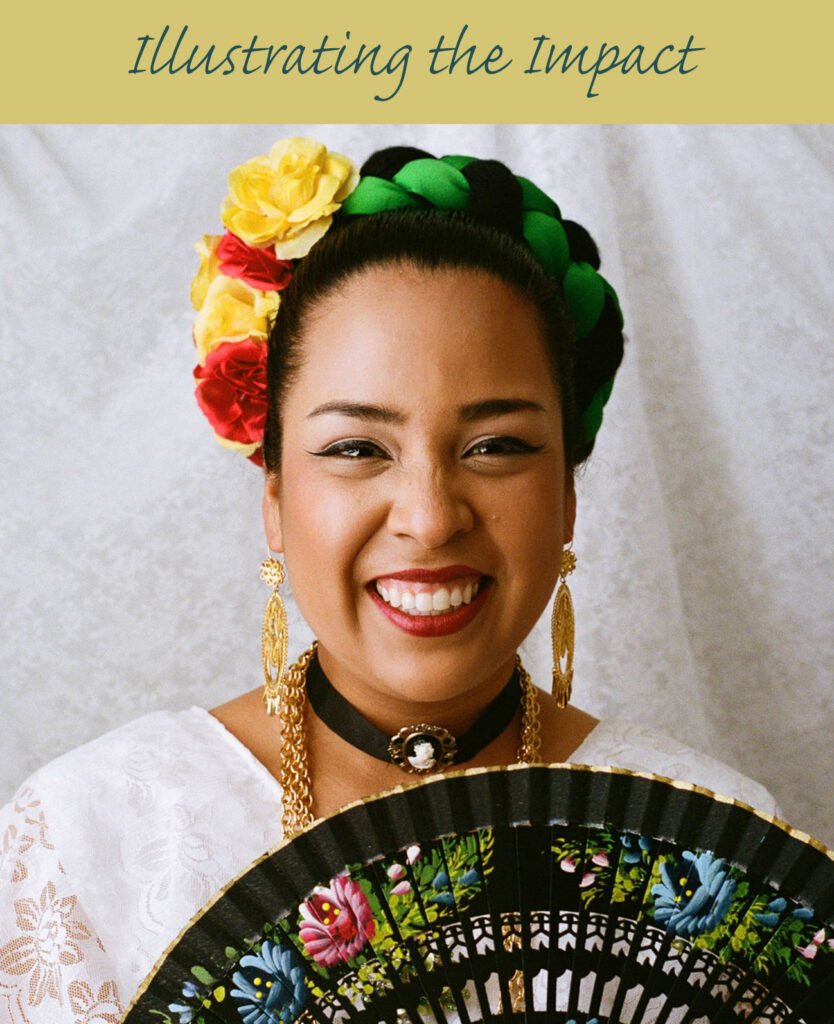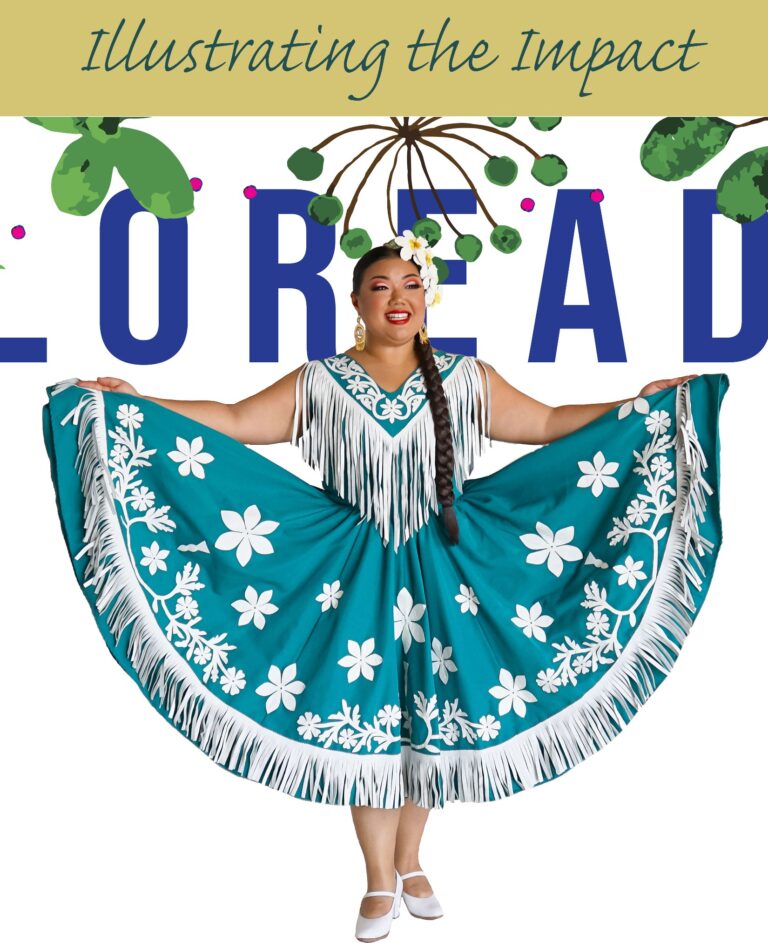ARTISTRY

Since childhood, Victoria Robles, a multi-generational folklorista, has appreciated the arts, even wanting to pursue it as a profession. She has dedicated most of her life to the art of folklórico dance but is also passionate about hip-hop, jazz, modern dance, ballet, and musical theatre. Although now a fully realized artist, Victoria recalls a period in which she struggled to de-compartmentalize these different art forms. It wasn’t until 2010 when her mother, and Los Lupeños de San José alumni, Amada Robles, encouraged Victoria to audition for Adelita! The Women of the Mexican Revolution whose choreographer was Lupeños co-founder Susie Cashion. This experience initiated the expansion of Victoria’s artistic horizons and she began to diversify her artistry by redefining what being a folklórico dancer entails.
Victoria booked the gig and began to work alongside dancers from Los Lupeños de San José. As one of the youngest performers there, she was in awe of getting to work with experienced dance artists. She recalls how Los Lupeños took her under their wing, exposing her to refined skirt work and nuances of footwork. Victoria fell in love with the teaching style that Susie Cashion instilled in her dancers as she emphasized the importance of adding characterization to a performing persona. Victoria found that Los Lupeños resonated with the artist she had long aspired to be, prompting her to audition and become a part of the group shortly after. With this artistic exposure, Victoria realized the importance of blending multiple art forms to enhance her artistry.
The thing that attracted me to Los Lupeños was expanding my artistic lens.Being part of Los Lupeños impacted Victoria’s artistry as it encouraged her to pursue different experiences. She details how despite being a folklórico dancer, she was encouraged to pull from her different dance forms. Warm-ups during rehearsals with the group incorporated Afro-Latino movements aimed at giving the body angulation and liquidity, in contrast to the staccato folklórico patterns. Los Lupeños created a gateway for Victoria to expand her artistry, and she began taking jazz, ballet, and modern dance while continuing to play with Afro Latino movements. She was set on not only becoming a stronger folklórico dancer but a well-rounded artist as well.
Being a Lupeño is being a dancer, actor, and sometimes a singer… it is a great place to become a true artist and a well-rounded one at that.Victoria details how her dance background and love for musical theatre began to blend. Through Cashion Cultural Legacy’s Artist Exchange program, she learned the Plaza Guadalajara suite taught by Maestro René González López, of Guadalajara, Jalisco. This piece emphasized the cultural importance of Mexican plazas, detailing their influence on music, dance, and social interaction in the mid-1800s. Victoria, a millennial with a Mexican-American lineage, describes the challenges of encapsulating characters from a different period whose lives are unlike the fast-paced instantaneous socializing done just by touching a screen. Her preparation for this performance went beyond dance, as she found herself immersed in the history of the time in order to capture the artistic integrity of the piece, in turn connecting her with her Mexican roots.
It was more than a dance experience it was a full artistry experience in the whole.Victoria has enriched her artistry by being willing to jump into any learning environment and let it be a challenge. Aside from her artistic development, she credits folklórico for her close ties to Mexican culture, history, and music, stating that it allowed her to appreciate the roots of the people who came before her and continuing to carry them with her in everyday life. With encouragement from Susie Cashion, she pursued a Bachelor of Arts in Dance and a Master of Arts in Cultural Management. Victoria became a performer at the Disneyland Resort, where she is now an Entertainment Manager.


